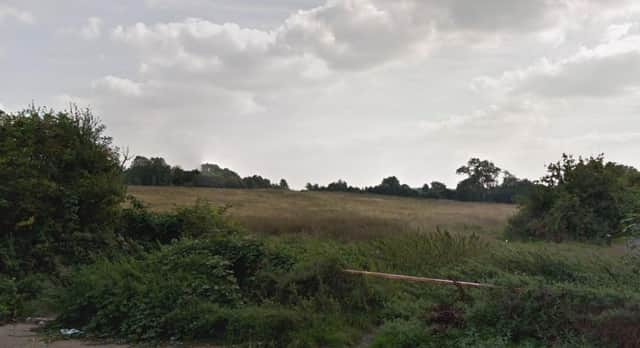Plans for caravan site near 'unique' neolithic site in Luton refused


Plans for up to eight caravans for four gipsy families on a plot of land in Luton have been refused because of the impact on a nearby Neolithic ancient monument.
A change of use application was submitted to the borough council to provide a residential caravan site for these families at 93 Bramingham Road.
Advertisement
Advertisement
The site is a triangular piece of land located between “the back of 37 to 91 Bramingham Road and the scheduled ancient monument Waulud’s Bank”, according to a planning officer’s report.
“It has two access roads and both appear overgrown, one to the north of 91 Bramingham Road with the second between numbers 75 and 77,” said the report.
“There’s an observable historic use as caravan storage, dating back a number of decades. A number of applications have been received and all refused, mainly during the 1980s for residential development of this land.
“Pitches and plots for the provision of sites for gipsies, travellers and travelling showpeople will be permitted in line with current government policy, which identifies certain criteria that must be met to be considered acceptable.
Advertisement
Advertisement
“Part of it refers to the historic environment, aiming to protect, conserve and improve Luton’s unique and rich heritage, identity, and sense of place, while development proposals must take account of the character, setting, and local distinctiveness of local affected heritage assets.
“There’s no identified need for such accommodation at this time, and the council is meeting the demand for housing within the borough.
“It’s considered the application would be unacceptable as a matter of principle, given objections received from technical consultees about the lack of appropriate research, surveys and evidence to support compliance with Local Plan policies and aspects of the national planning framework.
“The site is set back from the street, so it wouldn’t be anticipated the design and street scene impacts would be significant,” added the report.
Advertisement
Advertisement
“But no details have been provided on site clearance, while its use for permanent living purposes is out of character with the openness, peace and tranquillity of this location.
“The ‘Neolithic enclosure, known as Waulud’s Bank’, includes the prehistoric earthwork and associated archaeological features located in the area next to it. This is not a typical example and is therefore considered unique.
“Only four `henge-enclosures’ have been firmly identified in the entire country. They usually consist of large circular or oval enclosures, occupying low-lying areas and river valleys. Waulud’s Bank lies by the River Lea, which rises in a series of springs within one corner of the monument.”
The decision notice explained the application as “contrary to the public interest and policies, materially and adversely affecting Waulud’s Bank”, with “insufficient information to properly assess the fundamental issues to considering the impacts on the monument”.
Advertisement
Advertisement
Historic England opposed the proposal as a matter of principle, and the Wildlife Trust for Bedfordshire, Cambridgeshire and Northamptonshire also objected to the scheme.
The trust described the site as within “the Leagrave Common and Waulud’s Bank county wildlife site, which is recognised for its habitat mosaic of woodland, marsh, calcareous grassland and neutral grassland”.